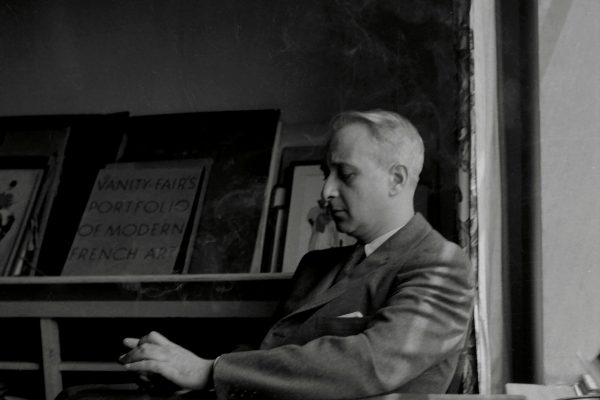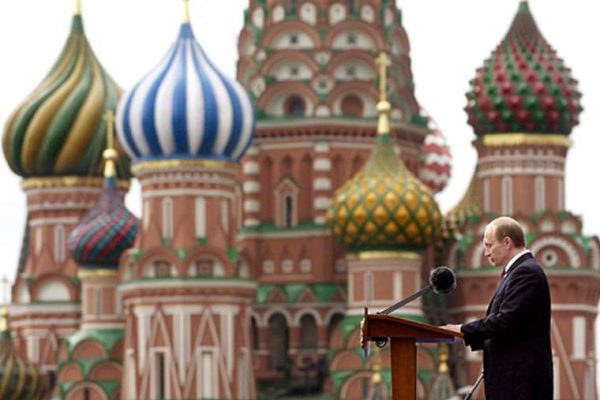American Studies
Louis Menand
Farrar, Straus and Giroux, $25 (cloth)
“Disagreements among liberals are not a recent development, a splitting up of what was once a unified core of beliefs,” Louis Menand observes in this new collection of essays. Since American liberal culture is so notably protean, Menand puts a range of such sensibilities in the same room, as it were, to shed light on the tradition’s shifting fortunes. We can glean at least this much about his intent from his choice of fifteen subjects, ranging from William James and Richard Wright to Pauline Kael, Laurie Anderson, and Larry Flynt. It’s an ingeniously eclectic mix, so we tuck into these essays with relish, eager to learn something fresh about what may be recoverable in liberal culture as it continues to face political assault from without, intellectual and moral disintegration from within.
The essays are always readable and often arresting, especially the piece (by far his best) on the origins of Oliver Wendell Holmes’s antiformalist jurisprudence in his Civil War battle traumas, and the one on T.S. Eliot’s anti-Semitism. But it turns out that Menand is more concerned with “appreciation” than with gaining the critical traction to move beyond our current state of lassitude. As in his fine yet similarly flawed study of pragmatism, The Metaphysical Club,Menand here demonstrates his gift for making difficult ideas accessible, particularly the more technical aspects of law and philosophy. Yet he does so without conveying the sense that something urgent may hang in the balance. The purpose of “historical criticism,” he points out, is not to identify a “useable past,” but to “historicize:” “putting things back into their contexts to see whether that makes a difference to the way we understand them.” One can’t help asking, for what purpose? Surely history is an exercise in moral inquiry as much as it is a matter of accurate and engaging storytelling, and the best historical writing is both intellectually honest and passionately partisan.
That said, one feature of liberalism fairly consistently rouses him to defense—commercialism. Here, though, he offers up his thoughts only indirectly and in indignant asides, with the exception of the admiring essay on Rolling Stone founder Jan Wenner. Menand argues that Wenner was a real rock-and-roll fan who wasn’t taken in by the counterculture’s moralistic quest for authenticity and who as a result successfully hawked “The Sixties” in the pages of his magazine. Indeed, Menand’s enthusiasm for commericalism and pop culture goes far toward explaining why his work seems so acquiescent. After all, a defining feature of liberalism is commerce, and—especially in our own day—even the triumph of the market at the expense of all rival moral traditions.
So Menand does indeed have a point of view—call it postmodern market complacency. Some of his subjects are served well by it (Wenner, William Paley, William Shawn’s New Yorker) or at least are not distorted by it (Holmes, Norman Mailer, Maya Lin). But for others it accounts for what can only be called a tin ear. His ambitious essay on Christopher Lasch, for example, which originated as a review of the historian’s effort to recover populism’s critique of liberal faith in progress (The True and Only Heaven), is lucid and comprehensive. But because he seems deaf to Lasch’s structuring baseline—that the modern idea of progress has little in common with classical or millennial versions, but is rather pegged to the unleashing of markets in the eighteenth century—he can’t see why there’s something more at stake than simple moralism in Lasch’s “provocative,” even “paranoid” and “offensive” sympathy with populist thought. Robert F. Kennedy, with his cool expertise, may have been right and George Wallace wrong about desegregation, but that doesn’t rebut Lasch’s point that small communities, bound by duties to one another as well as by rights, are more capable of resisting corporate domination—psychically, politically, culturally—than are those committed primarily to self-interest. Menand’s failure to recognize that recovering this intellectual history makes a worthy contribution to liberalism itself, suggests just how unobjectionable, how merely interesting, he finds current arrangements.
Likewise, Menand seems peculiarly blind to the ways the market, abetted by the revolution in computer technology, has shaped neoliberal psychology. That’s why he can conclude, after a fascinating interview with then–vice president Al Gore, that what “drives” the man is not the “mild, ecumenist side or his personality” committed to cyber-Madisonianism, smooth organizational process, and the holistic reunification of science and religion, but political will. Yet these characteristics are hardly antithetical, and, as we have seen since at least the 1970s, become exaggerated as market ideology plunges politics and public debate into the shadowy world of private exchange.
Comparisons have been made between Menand and the Lionel Trilling of The Liberal Imagination. But reading Menand is more like watching a decent PBS documentary—edifying, informative, often insightful, part of a salutary effort in recent years to re-engage Americans with their history, and just a little too satisfied that all is right with the world.
—Catherine Tumber
What Liberal Media? The Truth About Bias and the News
Eric Alterman
Basic Books, $25 (cloth)
In a February 2003 interview with neoconservative pundit Bill O’Reilly, Nation media columnist Eric Alterman disputed the idea of the “so-called liberal media”—the liberal cabal that vilifies conservatives and champions the heroes and bleeding-heart causes of the left.
“Mr. Alterman, you have left the building—with Elvis,” O’Reilly scoffed when Alterman claimed that “liberal” media outlets like NPR and PBS do not lean as far to the political left as Fox, the Wall Street Journal and the Washington Times slant to the right.
The disconnect between Alterman and O’Reilly is the basis of Alterman’s intelligent and exhaustively researched new book, What Liberal Media? According to Alterman, the widely accepted idea of an entrenched “liberal” American media is an insidious myth, one that “empowers conservatives to control the debate in the United States to the point where liberals cannot even hope for a fair shake anymore.”
First, Alterman argues, unlike media’s liberals, its conservatives are ubiquitous. Right-leaning newspapers, Internet sites, and television and radio shows abound. But conservatives also manage to pop up in “liberal” strongholds: the Atlantic Monthly has editor Michael Kelly; the New Republic has Andrew Sullivan; the New York Timeshas William Safire and Bill Keller. The result, Alterman says, is that “even the genuine liberal media is not so liberal.”
He also points out that—even before post–9/11 jingoism set in—the “liberal” media’s political coverage lacked a discernibly pro-leftist bent. During the 2000 election, the New York Times, the Los Angeles Times, the Washington Post and the Boston Globe harped on Al Gore’s sillier blunders (“inventing the Internet” and so on), but glossed over much of George Bush’s mottled record as governor of Texas. They were also reluctant to rush to Gore’s aid during the Florida recount. Instead, Alterman says, they “happily swallowed almost everything the Bush forces threw at them.” Since 9/11, oddly un-liberal things keep happening in the same “liberal” media; theNew York Times has even rallied around George Bush, calling for war with Iraq in its editorial pages.
Contrary to the popular myth, Alterman concludes that the truly liberal media is marginalized and is therefore “no match . . . for the massive conservative media structure that . . . determines the shape and scope of our political agenda.” Conservatives have already won; they just don’t want to let on.
The strength of Alterman’s argument lies in the staggering volume of evidence he uses to support it: facts or anecdotes to back up every point he makes, extensive footnotes, and references to helpful and relevant websites. What Liberal Media? does not suffer from the same flimsiness as Bernard Goldberg’s carnivalesque 2002 bestseller Bias, which argues that the liberal media is actually a well-organized, well-funded “news mafia.” What Liberal Media?needs to gain some currency with an ideologically diverse audience to have a real impact, but it is unlikely that hard-line conservatives—or moderates, for that matter—will pick up a book so boldly titled and so unapologetically (and actually) liberal.
Still, Alterman’s facts will be difficult to dispute. Hopefully, they will be just as difficult to ignore.
—Alison Cashin
Black, White, and in Color: Essays on American Literature and Culture
Hortense J. Spillers
University of Chicago Press, $27.50 (paper)
Hortense Spillers wrote many of the essays in this long-deserved collection during a period in which Black Studies departments were springing up across the country and black academics were “called upon to hit the ground, already running . . . to establish the game and play it at once.” Spillers faithfully attempted both feats and as this volume shows, she not only excelled at the game early and impressively but continued to develop new moves.
In her earlier essays Spillers works hard to temper her enthusiasm for Ralph Ellison, Gwendolyn Brooks, Toni Morrison, and even the eclectic (and white) William Gaddis, all in the hope of affording them their due critical attention. But that enthusiasm is precisely what carries her essays beyond the stock-and-trade literary variety. Spillers’s exceptionally heady readings of Invisible Man and Morrison’s Sula only partially obscure her impulse to burst through discussions of just literature to the spheres of experience that provoke it. In this regard several essays published in 1987 clearly mark a turning point, not to mention the insouciant crashing of psychoanalytic theory on the Black Studies scene. “Changing the Letter: The Yokes, the Jokes of Discourse,” perhaps the book’s sharpest piece, considers in one telescopic move the psychosocial effects of slavery from Uncle Tom’s Cabin to Ishmael Reed’s Flight to Canada: “After Uncle Tom’s Cabin, one needs a drink. Reed provides it.” But her landmark essay remains “Mama’s Baby, Papa’s Maybe: An American Grammar Book.” Ignited by Daniel Patrick Moynihan’s federally sanctioned 1969 report—which claimed that the matriarchal structure of black nuclear families “seriously retards the progress of the group as a whole”—Spillers psychoanalyzes the nation’s birth and growth from the moment of slavery vis <0x00E0> vis the figure of the black woman. It is a wildly ambitious essay that has been anthologized elsewhere, but it resonates here more than ever, finally nestled among the other work that occasioned it.
The legacy of Spillers’s career, however, certainly doesn’t reside in the quaint conclusion that Black Studies is important per se, but that, as a more recently heralded or authorized tradition of thought in the academy, it continues to inform our shared experience of literature and life in still unexpected and necessary ways. Near the end of a 1991 essay Spillers offers a stunning reading of Thomas Sutphen in Absalom, Absalom! as a white male uncommonly afflicted with “double consciousness.” Shaking loose William Faulkner and W. E. B. Du Bois in one paragraph is enough to gain tenure in at least two or three departments, and even to help launch a new one.
—David F. Smydra, Jr.
How to Be Alone
Jonathan Franzen
Farrar, Straus and Giroux, $24 (cloth)
In a now well-known essay—“Perchance to Dream”—published in Harper’s in 1996 and included here in a somewhat toned-down version titled “Why Bother?,” Jonathan Franzen despairs over the American novel, claiming that it is even less socially relevant than it was in 1981 when Philip Roth did its autopsy. In How to Be Alonehe questions the social relevance not just of literature, but of individual lives as well. How, Franzen asks, “does one preserve individuality and complexity in a noisy and distracting mass culture?”
He never really answers the question, perhaps because it’s impossible. But he does demonstrate in these compelling essays just how difficult it is to maintain a sense of engagement and agency in a society where the civic and commercial are virtually synonymous. In “Control Units” a town hopes to rekindle its failing economy by approving the conversion of a local abbey into a minimum-security prison. Just the opposite happens: like Sam Walton’s Wal-Mart the prison imports a cheap product (a cheap workforce) and guts the local economy. Another essay (“Lost in the Mail”) follows the Chicago postal service through a series of crises that mirror the ills of an increasingly polarized society: a poor, largely black workforce that sees civil service as one of a few limited options, and a frustrated middleclass that relies on other resources—private mail companies, faxes, and the Internet. In an essay on New York—Franzen calls it “largely a city of the mind” for the rest of the country—he describes the schizophrenia of daily life manifested in cyber cafés, clubs, galleries, etc., where the desire to disembody is matched only by the desire to seeandbeseen—as he puts it, to “be there.”
Three essays—“My Father’s Brain,” about his father’s battle with Alzheimer’s, “Meet Me in St. Louis,” about having his book The Corrections selected for Oprah’s Book Club, and “Why Bother?”—explore Franzen’s guiding question more personally, revealing his own struggle with how and how much he wants to be seen in the world, and how much he wants to be left alone.
But is he really willing to be left alone? Franzen’s dilemma is most evident in the fallout surrounding the Oprah debacle. He has always suggested that his refusal to be an “Oprah Author” has to do with issues about high and low art and his queasiness about readers choosing his book simply because it’s an Oprah Selection. Yet his essay focuses on his discomfort at the intrusion of publicity into his private life. He resists—I think, rightfully—the constant attempts of the producer to get him to visit the childhood home that he and his brothers sold two years after his mother’s death; he refuses to pose in front of it and won’t describe the inhabitants. When the day of shooting is over, Franzen retreats to a book-signing which, because it’s in his home town, is a more intimate affair than such things usually are. While he tells us he finds warmth and pleasure in meeting old friends, there’s a sense in the writing and in the focus of the essay that Franzen isn’t quite satisfied with this semiprivate affair; he wants social engagement on a grander scale.
Franzen’s ability to articulate the tension between our intimate and public lives is his great strength, yet his own persistent ambivalence reflects the very society he critiques. We can only look forward to how a writer with such skill might resolve this tension in work to come.
—Valerie Ellis







